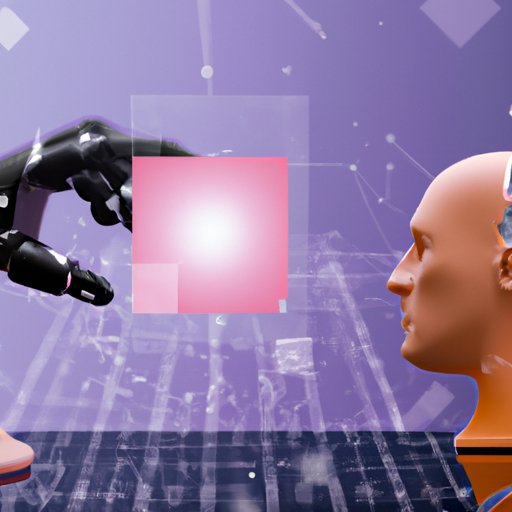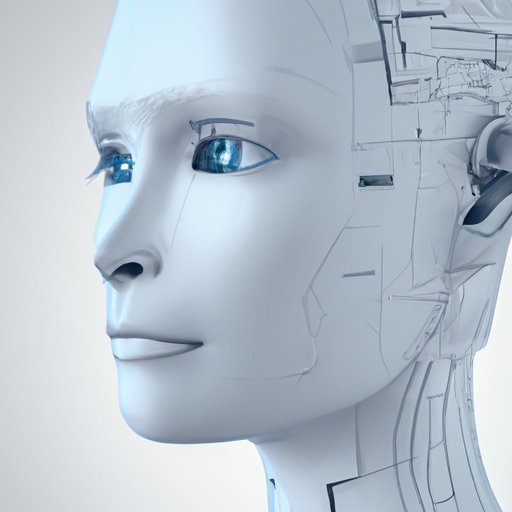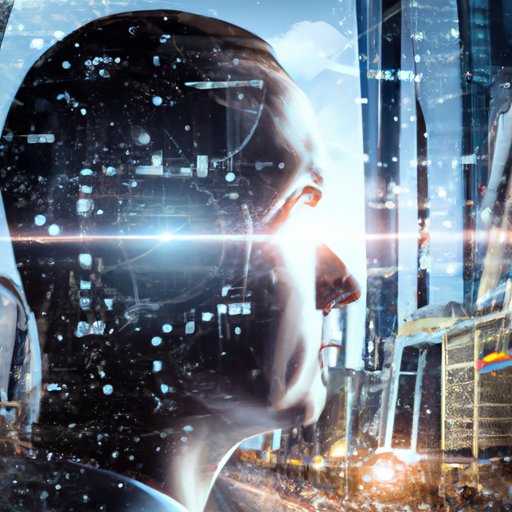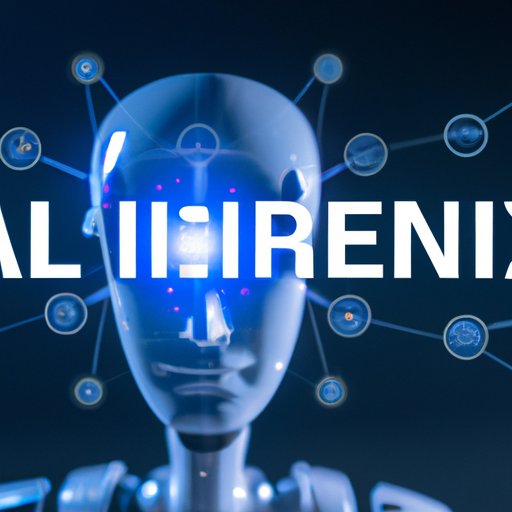Introduction
Artificial intelligence (AI) has been a major focus of research and development over the past several decades. AI technologies are becoming increasingly sophisticated, and they have the potential to revolutionize the way we interact with technology. The purpose of this article is to explore how AI is created, examine its history, explain the role of machine learning and neural networks, investigate the relationship between AI, robotics and automation, look at the use of AI in business and industry, and discuss the ethical implications of its use.

Examining the History of AI Development
The history of AI development can be traced back to the 1950s, when Alan Turing proposed the “Turing Test” to determine if a machine could think like a human. In 1956, John McCarthy coined the term “artificial intelligence” and organized the first conference on the topic. Since then, AI research has progressed rapidly, with major advances in computer vision, natural language processing, and robotics.
Early pioneers in AI research included Marvin Minsky, who developed the concept of “neural networks”; Herbert Simon, who studied problem-solving in machines; and John McCarthy, who developed the programming language LISP. In the late 1980s and early 1990s, AI research shifted to the study of “expert systems”, which were designed to simulate human reasoning. More recently, advances in machine learning and deep learning have enabled the development of more sophisticated AI technologies.
Exploring the Role of Machine Learning and Neural Networks
Machine learning is an important part of AI development. It involves the use of algorithms to identify patterns in data and make predictions about future events or outcomes. For example, machine learning algorithms can be used to recognize objects in images or classify text documents.
Neural networks are another key component of AI development. They are based on the idea that the human brain is composed of interconnected neurons, each of which can affect the others. Neural networks use mathematical models to simulate these connections, allowing them to learn from experience and recognize patterns in data.
Understanding the Relationship Between AI, Robotics and Automation
Robotics plays an important role in the development of AI technologies. Robots are used to collect data, explore new environments, and perform tasks that would otherwise be too dangerous or difficult for humans. Automation is also closely tied to AI, as it enables machines to take on complex tasks that would otherwise require human intervention. This has significant implications for the job market, as automation is increasingly being used to replace manual labor.
Investigating the Use of AI in Business and Industry
AI is being used in a variety of ways in business and industry. It can be used to automate processes, such as customer service or inventory management. AI can also be used for predictive analysis, helping companies anticipate customer needs and make better decisions. Additionally, AI is being used in marketing and advertising to target specific audiences and deliver personalized experiences.

Exploring the Ethical Implications of AI
As AI becomes more sophisticated, there are a number of ethical considerations that must be taken into account. One of the most significant concerns is the impact of AI on human decision making. AI algorithms can be used to make decisions without human input, raising questions about accountability and transparency. Additionally, AI raises privacy concerns, as companies may use personal data collected by AI algorithms to make decisions about individuals.

Looking Ahead to the Future of AI
The future of AI is full of promise and potential. Advances in AI technology will enable machines to become more capable and autonomous, leading to further breakthroughs in fields such as healthcare, transportation, and finance. Additionally, AI has the potential to create new jobs and revolutionize existing industries.
Conclusion
In conclusion, this article has explored how AI is created by examining its history, technologies, and implications for the future. It has looked at how AI is used in business and industry, as well as the ethical considerations of its use. AI is an exciting field of research and development, and its future promises to be even more revolutionary and transformative.
(Note: Is this article not meeting your expectations? Do you have knowledge or insights to share? Unlock new opportunities and expand your reach by joining our authors team. Click Registration to join us and share your expertise with our readers.)
